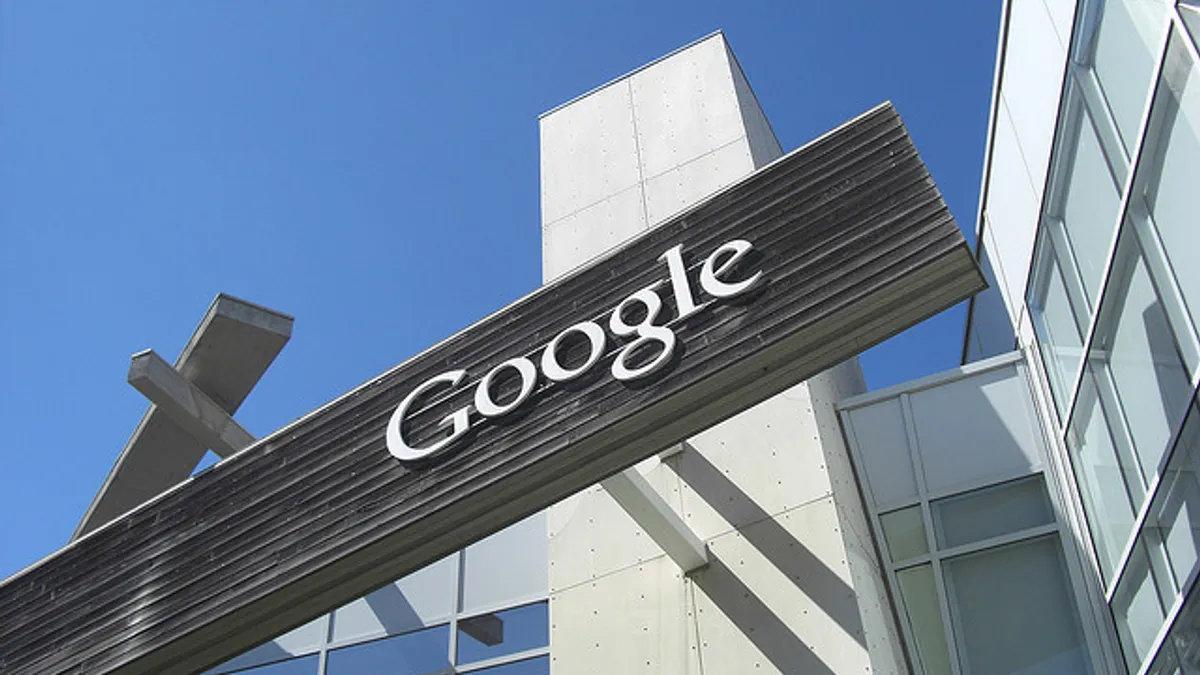Dive Brief:
- Google formally introduced Google Cloud on Thursday, confirming rumors of a name change for its portfolio of enterprise products.
- Google Cloud encompasses all of the company's Cloud Platform capabilities, from IaaS to productivity and collaboration tools.
- Its services now include the G Suite, the new name for Google Apps for Work, which includes Gmail, Docs and Drive, among others; machine learning tools and APIs; and the Android phones, tablets and Chromebooks that use the cloud, according to the announcement.
Dive Insight:
What's in a name? Consumers are already familiar with the search giant, but the company has had to work to court business clients in its effort to become a more dominant player in the enterprise provider and cloud space.
The name change unites the company's various enterprise offerings under one brand, which encompasses more than just cloud storage. Now, companies can associate a suite of Google products with cloud services, catering to a more mobile and agile image.
Google cloud chief Diane Greene has been pushing to reinvent Google's enterprise offerings, particularly with its cloud offerings, drawing on her experience as co-founder of VMware to build a strong and loyal customer base.
As part of the rebrand, Google also announced the addition of eight more regions, which should make the company more competitive by reducing latency in its offerings. On top of the new regions — located in Mumbai, Singapore, Sydney, Northern Virginia, São Paulo, London, Finland and Frankfurt — the company said more regions will be announced next year.
Though Amazon Web Services and Microsoft are the clear IaaS leaders, according to Gartner, as of August 2016, Google was considered a "visionary," an up-and-comer that showed promise with its offerings. But when measuring cloud latency, Google lags behind. Additional regions should help speed up its offerings and create a tempting offering for customers.












